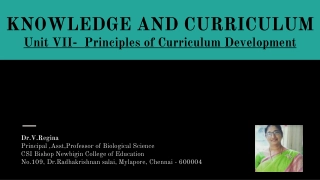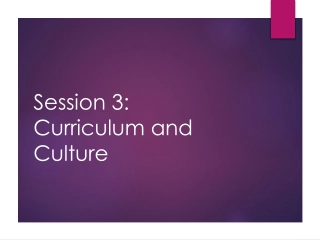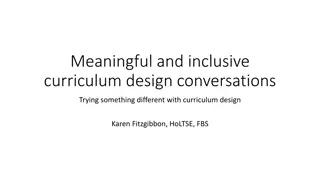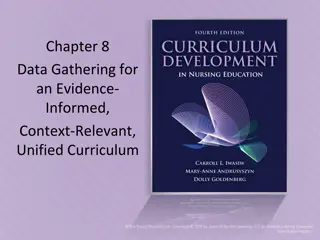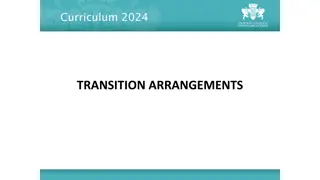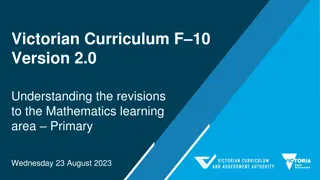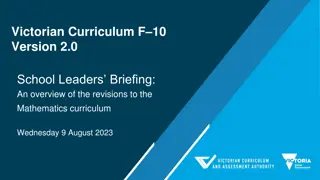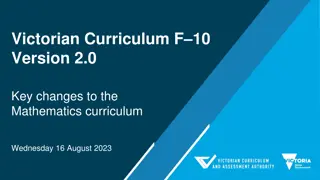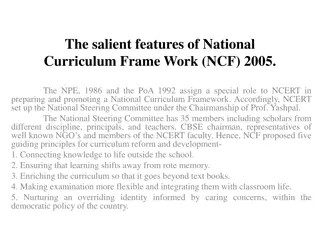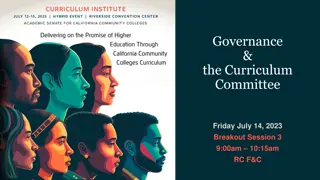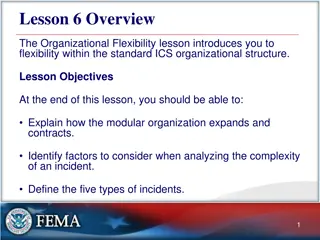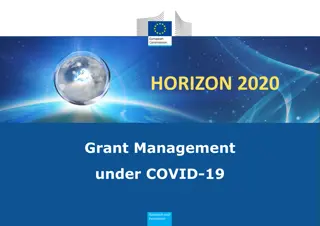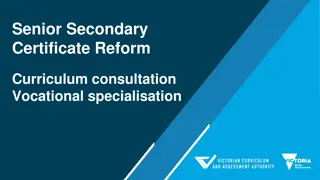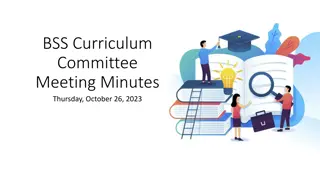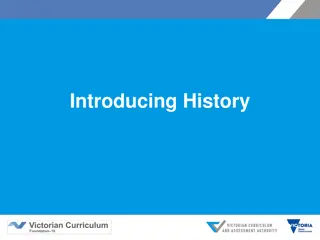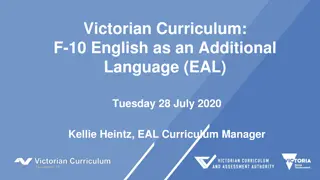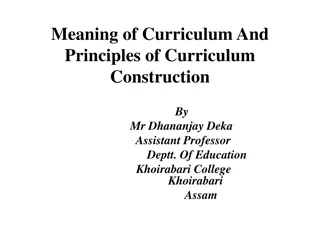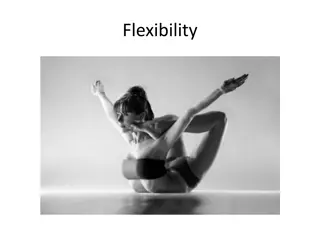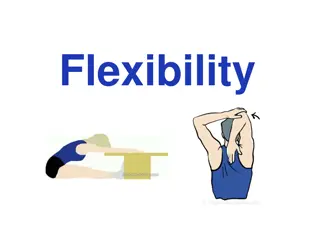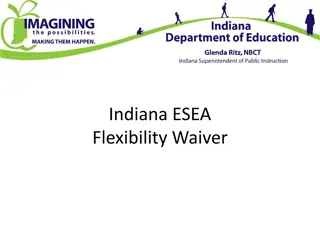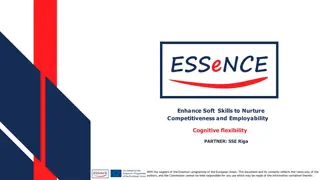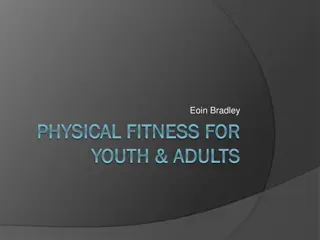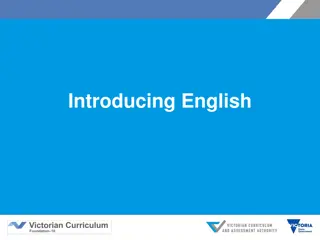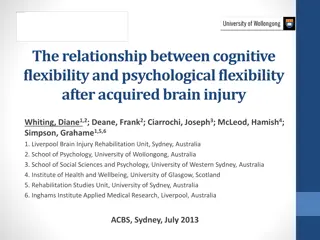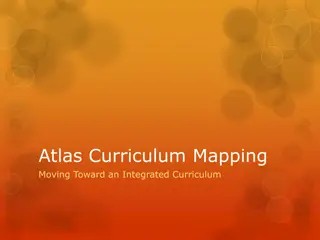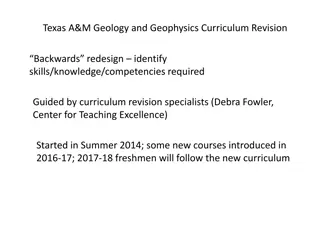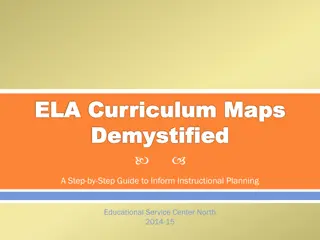Knowledge and Curriculum
Various forms of curriculum, the importance of curriculum, new trends in education, and the relationship between power and ideology in curriculum development. Understand the role of the state in curriculum development and the impact of meritocracy on the curriculum.
2 views • 16 slides
Knowledge and Curriculum
The principles of curriculum development to improve education quality, align curriculum with teaching methods, and meet student needs. Discover how innovative curriculum design influences learning outcomes and fosters independent thinking. Curriculum planners play a crucial role in creating effectiv
1 views • 21 slides
Session 3: Curriculum and Culture
The complex relationship between curriculum and culture, including how culture influences curriculum production, the cultural messages within curriculums, and who is advantaged or disadvantaged by the curriculum.
0 views • 17 slides
The Significance of Curriculum Development in Early Childhood Education_removed
Curriculum development process is vital in education, ensuring a suitable and engaging learning experience for early childhood education. It involves constantly improving and adapting the curriculum to meet the needs of children, bridging the gap between knowledge and reality expectations. Teachers
2 views • 1 slides
Unpacking the New ELAL Curriculum for Grades 4-6
In the spirit of reconciliation, acknowledgment of traditional Treaty lands in Alberta is highlighted, emphasizing the importance of understanding Indigenous history. The journey to the new curriculum is depicted along with the direction for curriculum development in Alberta, focusing on promoting s
1 views • 50 slides
Rural Hospital Flexibility Program in Montana: Enhancing Quality Care
The Rural Hospital Flexibility Program in Montana, managed by the Montana Health Research and Education Foundation, focuses on developing quality care initiatives for small rural hospitals. With a mission to improve healthcare performance and customer satisfaction, the program includes various quali
1 views • 35 slides
Meaningful and inclusive curriculum design conversations
In a quest for meaningful and inclusive curriculum design, Karen Fitzgibbon explores a new approach to engage course teams in enhancing curriculum design. By addressing internal and external drivers for change, the aim is to facilitate inclusive conversations that promote learner-centered models and
1 views • 10 slides
Understanding Contextual Factors in Curriculum Development
This chapter delves into the significance of internal and external contextual factors in shaping curriculum development. It discusses the process of gathering essential contextual data, identifying relevant sources, and integrating data to create an evidence-informed, context-relevant, unified curri
5 views • 31 slides
Transition Arrangements for Curriculum Change in August 2024
Transition arrangements for the Curriculum 2024 involve changes in training levels, minimum training periods, and the completion criteria at each level. Academic trainees have options regarding transitioning to the new curriculum based on specific timelines. Progression through various training leve
4 views • 20 slides
Victorian Curriculum F-10 Version 2.0 Revision Overview
The Victorian Curriculum F-10 is undergoing revisions, with a focus on the Mathematics learning area for primary education. The curriculum acknowledges the traditional custodians of the land and aims to provide high-quality teaching resources aligned with Victorian standards. The VCAA, a statutory a
4 views • 51 slides
Overview of Victorian Curriculum F-10 Mathematics Curriculum Revisions
The Victorian Curriculum F-10 is being revised to incorporate content from the Australian Curriculum Version 9.0 with the aim of making it more manageable and aligned with Victorian priorities. The revisions focus on ensuring efficient implementation, strengthening student access to essential knowle
10 views • 23 slides
Overview of Victorian Curriculum F-10 Mathematics Revision
This document outlines key changes in the Victorian Curriculum F-10 Mathematics curriculum, including acknowledgments of the traditional custodians of the land, objectives alignment, what has not changed, and the timeline for implementation starting from 2024. The revisions aim to provide more manag
0 views • 43 slides
National Curriculum Framework (NCF) 2005 - Salient Features Summary
The National Curriculum Framework (NCF) 2005 outlines significant changes in education, focusing on connecting knowledge outside of school, moving away from rote memorization, enriching the curriculum beyond textbooks, making examinations more flexible, and nurturing an identity rooted in caring and
0 views • 7 slides
Governance & the Curriculum Committee: Understanding Regulations and Structures for Effective Governance
This session explores the regulations and governance structures related to curriculum committees in colleges and districts, emphasizing the partnership between administration and academic senate. Key topics include establishing curriculum committees, examples of committee setups, and discussions on
2 views • 25 slides
Understanding Organizational Flexibility in ICS
Explore the concept of organizational flexibility within the standard ICS structure, learning how the modular organization can expand and contract based on incident complexity and size. Delve into the guiding principles of NIMS, the importance of standardization alongside flexibility, and key consid
1 views • 33 slides
Grant Management Flexibility under Horizon 2020 During COVID-19
Grant management under Horizon 2020 during COVID-19 requires maximum flexibility with eligibility of costs incurred, force majeure clause usage, and flexibility in actual personnel costs. Teleworking costs are eligible, and personnel costs can be adjusted for exceptional circumstances. Travel costs
1 views • 12 slides
Understanding Flexibility: Types, Methods, and Benefits
Flexibility is the ability of joints to move within their maximum range, crucial for overall health and sports performance. It can be passive or active, and there are various methods to enhance it such as ballistic, static stretching, dynamic stretching, and proprioceptive neuromuscular facilitation
0 views • 8 slides
Proposed Senior Secondary Certificate Reform Curriculum Consultation for Vocational Specialisation
A new curriculum is being proposed for vocational specialisation in senior secondary certificates in Victoria. The curriculum focuses on providing flexible pathways for students with standards-based assessments, offering courses aligned with students' needs and aspirations. Feedback on the draft cur
0 views • 19 slides
Centrica's Flexibility Market Vision for Future Markets: Policy and Industry Developments
Centrica's Regulatory Affairs team shared insights at the Cornwall LEM sign-off event regarding the importance of independent flexibility market platforms to deliver transparency, neutrality, and coordination between DSOs and ESOs. They emphasized the need for updated network security standards, add
0 views • 6 slides
Zebra ZT400 Series: Rugged Durability & Application Flexibility
The Zebra ZT400 Series offers rugged durability for demanding applications, loaded with features for flexibility, easy integration, operation, and management. Ideal for industries like manufacturing, transportation, logistics, retail, and healthcare, this series builds on the legacy of the ZM models
0 views • 13 slides
Importance of Flexibility and Stretching for Better Health and Injury Prevention
Flexibility and stretching play a crucial role in preventing injuries, promoting better health, and preparing the body for physical activities. Adequate muscular flexibility allows joints to move efficiently, reducing the risk of compressing tissues or nerves. By incorporating proper stretching tech
0 views • 17 slides
Recertification and Assessment of Core Curriculum Courses
The Core Curriculum Council of the Faculty Senate presents a process for recertification and assessment of core curriculum courses to maintain integrity and quality. Courses must be recertified every four years to ensure consistency amidst changes in instructors, content, and teaching methods. State
0 views • 33 slides
BSS Curriculum Committee Meeting Overview
The BSS Curriculum Committee Meeting discussed the need to update the curriculum process due to the increasing workload and impending retirement of key personnel. The meeting also compared curriculum processes in different divisions, highlighting the roles of faculty and staff in managing curriculum
0 views • 9 slides
Exploring the Victorian Curriculum for History Education
The Victorian Curriculum F-10 for History aims to foster lifelong interest in historical study, develop critical thinking skills, and enable students to become informed citizens. The curriculum structure includes strands, achievement standards, and a focus on historical concepts and skills. Key mess
1 views • 5 slides
Importance of the New Victorian Curriculum F-10 EAL
The new Victorian Curriculum F-10 EAL aims to establish EAL as a standalone curriculum, provide a consistent structure across all learning areas, and recognize the diverse backgrounds and learning experiences of EAL students in Victoria. It also focuses on supporting the specific needs of EAL studen
0 views • 29 slides
Understanding Curriculum and Principles of Curriculum Construction
Curriculum is the core of the school system, facilitating the transmission of knowledge from teachers to students. It encompasses the courses, activities, and learning environment provided to pupils. Principles of curriculum construction include child-centeredness, individual differences, co-relatio
0 views • 8 slides
Rutherford High School Curriculum Overview
Rutherford High School offers a comprehensive curriculum ranging from English to Mathematics. The curriculum night provides an overview of courses offered, course selection process, and graduation requirements. Students must complete four years of English and Mathematics, including specific assessme
0 views • 37 slides
Understanding Flexibility and Stretching Techniques
Flexibility is crucial for optimal physical performance and injury prevention. It refers to the ability to move joints through a full range of motion without restrictions. Factors limiting flexibility include tissue elasticity, bony structure, and muscle/tendon extensibility. Understanding active an
0 views • 28 slides
Understanding Flexibility and Joint Health
Flexibility is essential for optimal joint health, allowing for smooth movement and reducing the risk of injuries. Joints, ligaments, muscles, and tendons play crucial roles in supporting flexibility and mobility. Maintaining flexibility through activities like static stretching can promote overall
0 views • 43 slides
Understanding Indiana's ESEA Flexibility Waiver
Indiana's ESEA Flexibility Waiver, part of cohort 1, provided flexibility in utilizing the state's own accountability system, allocating Title I funds, and improving academic performance at state and local levels. The waiver aimed to enhance educational outcomes, address achievement gaps, promote eq
0 views • 122 slides
Examining Socioeconomic Status of Childcare Workers in Illinois
Childcare workers in Illinois earn a median hourly wage of $10.5, ranking 35th in hourly wages among 730 occupations. The study aims to understand the flexibility and demographics of childcare workers compared to other occupations with similar wages. Assumptions suggest childcare work is predominant
0 views • 11 slides
Overview of Victorian Curriculum Mathematics F-10
The Victorian Curriculum Mathematics F-10 provides a comprehensive framework for the development of mathematical skills from Foundation to Level 10, incorporating the Australian Curriculum while reflecting Victorian priorities and standards. It aims to equip students with essential numeracy skills f
0 views • 26 slides
Enhancing Cognitive Flexibility for Employability
Cognitive flexibility is a crucial skill for adapting to new situations and problem-solving in today's competitive job market. This module focuses on identifying, assessing, and enhancing cognitive flexibility to nurture competitiveness and employability. Learn how to recognize the importance of cog
0 views • 24 slides
Comprehensive Physical Fitness and Training Guide by Eoin Bradley
Explore the realm of physical fitness through Aerobic Endurance, Skills, Strength, Speed, Power, Flexibility, Mobility, and Agility. Unveil the importance of Mobility, Flexibility, Strength, Aerobic Endurance, and more. Delve into specific training requirements for GAA Football and seasonal training
0 views • 23 slides
Internal Medicine Stage 1 Curriculum Overview
This comprehensive guide details the Internal Medicine Stage 1 Curriculum, highlighting key components such as curriculum structure, curriculum changes, training pathways, specialty groups, and unchanged practices. The curriculum is designed to enhance training and assessment in areas like geriatric
0 views • 12 slides
Overview of Victorian English Curriculum
The Victorian Curriculum F-10, released in September 2015, serves as a foundational component of the Education State, aligning with the Australian Curriculum while reflecting Victorian priorities and standards. The English curriculum prioritizes language skills development through listening, reading
0 views • 9 slides
The Relationship Between Cognitive Flexibility and Psychological Flexibility After Acquired Brain Injury
This study explores how cognitive flexibility and psychological flexibility interact after an acquired brain injury. It examines whether individuals who exhibit cognitive inflexibility can achieve psychological flexibility, considering the impact of cognitive impairments post-injury. Cognitive flexi
0 views • 21 slides
Enhancing Curriculum Development through Mapping for Schools
Curriculum mapping in schools involves using electronic tools to input, track, and analyze data related to curriculum, enabling stakeholders to meet standards, align content, collect real-time data on instruction, and reflect on practices for continuous improvement. Software programs like Rubicon At
1 views • 15 slides
Texas A&M Geology & Geophysics Curriculum Revision and Development
Involving a backward redesign led by curriculum revision specialists, the Texas A&M Geology and Geophysics curriculum has been undergoing changes since 2014. The revision aims to identify the necessary skills, knowledge, and competencies for students. It includes new courses introduced in 2016-17, w
0 views • 5 slides
Demystifying ELA Curriculum Maps: A Comprehensive Guide for Informed Instructional Planning
This guide delves into understanding the 2014-15 ELA Curriculum Maps, their purpose, how to effectively utilize them for instructional planning, and the components included within them. It aims to provide a deeper insight for educators on aligning their curriculum with CCSS, maintaining consistency,
0 views • 25 slides

